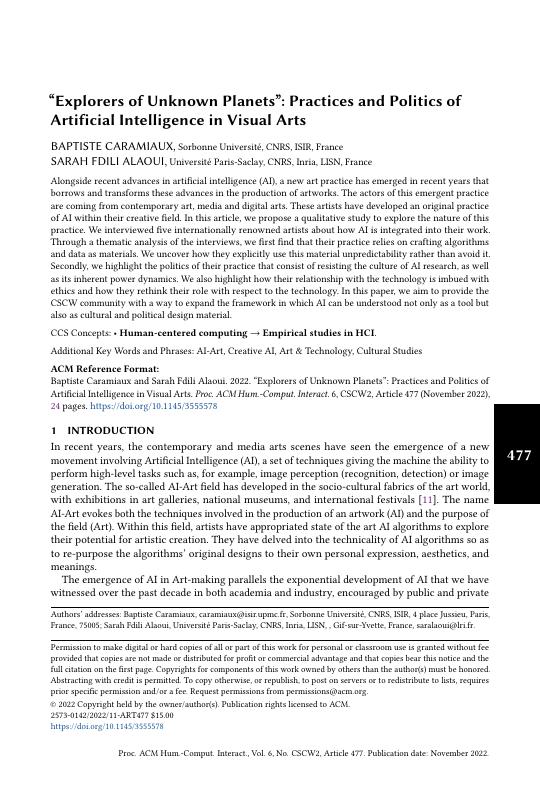AI Art Practice
In the late 2010s, a small but influential group of media artists began experimenting with artificial neural networks. Their work involved curating bespoke datasets, training custom machine-learning models, and creatively manipulating neural network architectures to open up new aesthetic and expressive possibilities. The growing interest in this novel art scene resulted in conferences, exhibitions, auctions, and artist residencies dedicated specifically to machine learning in creative practice.
From a research perspective, this raises an important question: What defines the practice of artists using AI in relation to the technology? What are the impacts of AI innovation on their practice? These questions sit at the intersection of Human–Computer Interaction (HCI) and Science and Technology Studies (STS).
AI Art with Deep Learning
In a first work from 2021, we conducted a qualitative study to investigate these issues. We interviewed internationally recognized artists to understand how AI is woven into their creative processes. These artists were: Memo Akten, Jake Elwes, Mario Klingemann, Kyle McDonald, and Anna Ridler. Our findings show that these artists treat algorithms and data as artistic materials in their own right. In addition, they do not try to eliminate the unpredictability of machine-learning systems; instead, they intentionally work with it. Our study also highlights the political dimension of their practice, which often involves resisting dominant norms within AI research and questioning the power structures embedded in the technology. Ethical reflection is also present in their work, as is an ongoing reconsideration of their role as artists in relation to intelligent systems. Overall, our research offers the HCI community a broadened perspective on AI—one that understands machine learning not only as a technical tool, but as a cultural and political design material.
This work was published at ACM CSCW: (Caramiaux & Fdili Alaoui, 2022)
After the rise of GenAI
Then, in the early 2020s, the socio-technical landscape of AI and ML has undergone profound changes. Machine learning is no longer a domain reserved for researchers, engineers, and artists; it has rapidly transformed into a constellation of consumer-oriented services, mainly using natural language descriptions to generate synthetic media—what is now known as generative AI (genAI). For instance, text-to-image (T2I) generators, marketed as a facilitator of creativity, have fueled online recreative practices, and the conversational agent ChatGPT became the fastest-growing consumer software application in history. The diversification of creative usage using AI also triggers contentions among creative professionals. For instance, visual artists experienced plagiarism, economic and reputational harms and express concerns over genAI’s impact on the workforce and profit distribution.
In an ongoing research project, we are interviewing 30 artists who have been working with this technology for the past ten years. Our aim is to find out their views on the impact of AI innovations on their practice and the ecosystem in which they operate.
